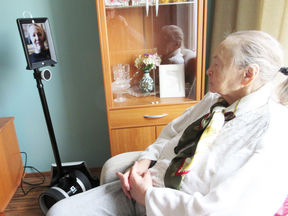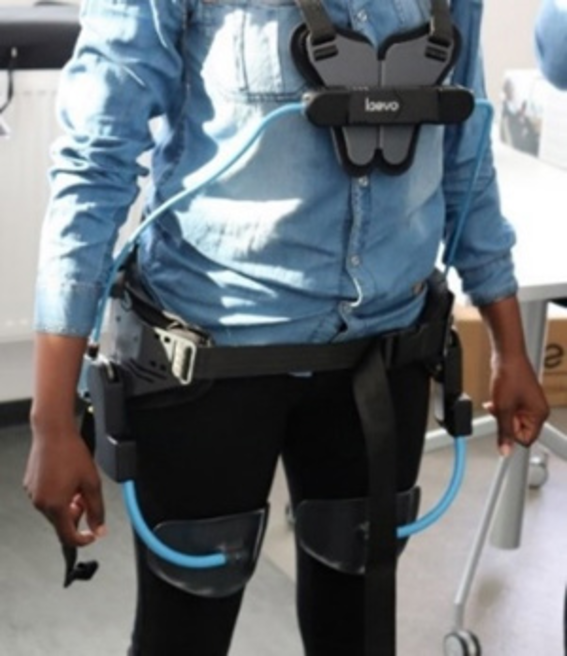Researchers: Service robotics will be part of a nurse's job in ten years

Finland, like many other Western countries, faces a big challenge in the form of an aging population that requires increasing amounts of high-quality and ethically sound care at a reasonable cost.
Researchers studied the possibilities of using service robots in welfare services in a six-year project called Robots and the Future of Welfare Services (the ROSE Project) funded by the Strategic Research Council at the Academy of Finland. All the research and development work in the project focused on the needs of the users.
‘We conducted numerous trials and studies in-home care, care homes, and hospital environments’, says Aalto University Professor Ville Kyrki, who served as the head of the ROSE project.
In the project, the research included issues such as how remote presence robots could work in different places. Already now many seniors living at home can talk to a nurse over a video link with the help of a tablet computer. With the help of a remote presence robot, a nurse can also move in the home of an elderly person to get an overall picture of the situation.
‘For example, in the coronavirus period, we implemented a five-week trial in which a robot helped grandparents keep in touch with their children and grandchildren. There was much positive feedback from the trial. The elderly felt that robots brought a sense of security and that it was more like a real visit than in a situation in which people only stare at the screen of a telephone or tablet. Meanwhile, the children felt that a moving robot gave them a more extensive view of their parents’ overall situation’, says research program director Sari Heikkinen at the Laurea University of Applied Sciences.

Help in busy and strenuous work
The researchers also looked for ways to support the well-being of nurses. Various robotic devices and robots can make it easier to complete certain tasks. Nurses are especially hopeful that the new technology will ease tasks that are physically strenuous.
‘In the trial different kinds of power vests worn by nurses proved to be interesting options. However, it will take some additional development before wearable robotics can be made to better suit nursing work and to improve nurses’ work ergonomics and work satisfaction’, says Postdoctoral Researcher Tuuli Turja of the University of Tampere.
VTT Technical Research Centre of Finland tested the use of a transport robot in two care homes for transporting meals and tools. For example, the benefits of robots were seen in the fact that with them one nurse was able to bring the meals of residents to their rooms, freeing the other nurses to assist those eating in the cafeteria. Many challenges were also encountered in the trial: the robots should be very reliable, and their efficient use would require changes to the facilities and practices.
‘The nurses were very active in this trial as well, and they started to develop new practices with the help of the robots. A more extensive deployment of robotics requires systematic planning and management’, Kyrki observes.
The experiments of the working group led to the publication of a road map for service robotics in Finland. Researchers believe that service robotics will be part of a nurse's job in ten years.
‘The use of robots in social services and health care will expand in the coming years along with other types of digitalisation. Service robots could be an excellent tool in logistics, for example, in the transport of food and laundry. In pharmaceutical care robotics are utilised in different phases, including in support for administering medications at the right time. Several institutions have rehabilitation robots, and in the long term, robots capable of social inter-action will bring completely new possibilities for the maintenance of the ability to function’, says Marketta Niemelä of VTT.
One issue that came up in several trials was that the technology of service robots is still inadequate, and robots have not played a very large role in some of the trials.
‘However, the technology is developing. Trials and research on their deployment indicate that achieving the benefits requires the development of the procedures of treatment together with the developing technology. Robotics also enables new kinds of services. The use of robots needs to be constantly evaluated’, Kyrki says.
The working group puts a high priority on the training that the use of service robots requires. Familiarity with robotics and other technology should be included at all levels in training in the nursing field. Nursing staff and elderly people should be included in the design and deployment of care robots and experiences gleaned from them should be widely distributed. The deployment of robots should also be evaluated.
Read more:
Robotics road map for welfare services in Finland
Policy brief produced in the project: Deployment of robots in the social and health care field should be evaluated from the point of view of sustainable development (only in Finnish)
Further information:
Professor Ville Kyrki
Aalto University
ville.kyrki@aalto.fi
+358 50 408 2035
Principal Scientist Marketta Niemelä
VTT
marketta.niemela@vtt.fi
Research Programme Director Sari Heikkinen
Laurea University of Applied Sciences
sari.heikkinen@laurea.fi
Professor Pertti Koistinen
University of Tampere
pertti.koistinen@tuni.fi
Coordinaator Kalle Laakso
University of Tampere
kalle.laakso@tuni.fi
Professor Helinä Melkas
LUT University
helina.melkas@lut.fi
Read more news
Changes to education information in ACRIS
We are updating how education information is managed in Aalto University's research information system, ACRIS. The old source data for education information will be removed to help eliminate potential duplicate entries.
Lecturer Marja Rastas: “As a teacher, you never finish learning”
During her career, the lecturer in art education has witnessed changes in both the field of art education and in education itself.
Study: Wood is a more cost-effective building material than concrete when emissions are monetized
The costs of the wood-built school and sports hall in Myrskylä were compared to a reinforced concrete alternative — and wood proved clearly more economical when environmental impacts were assigned a monetary value.






